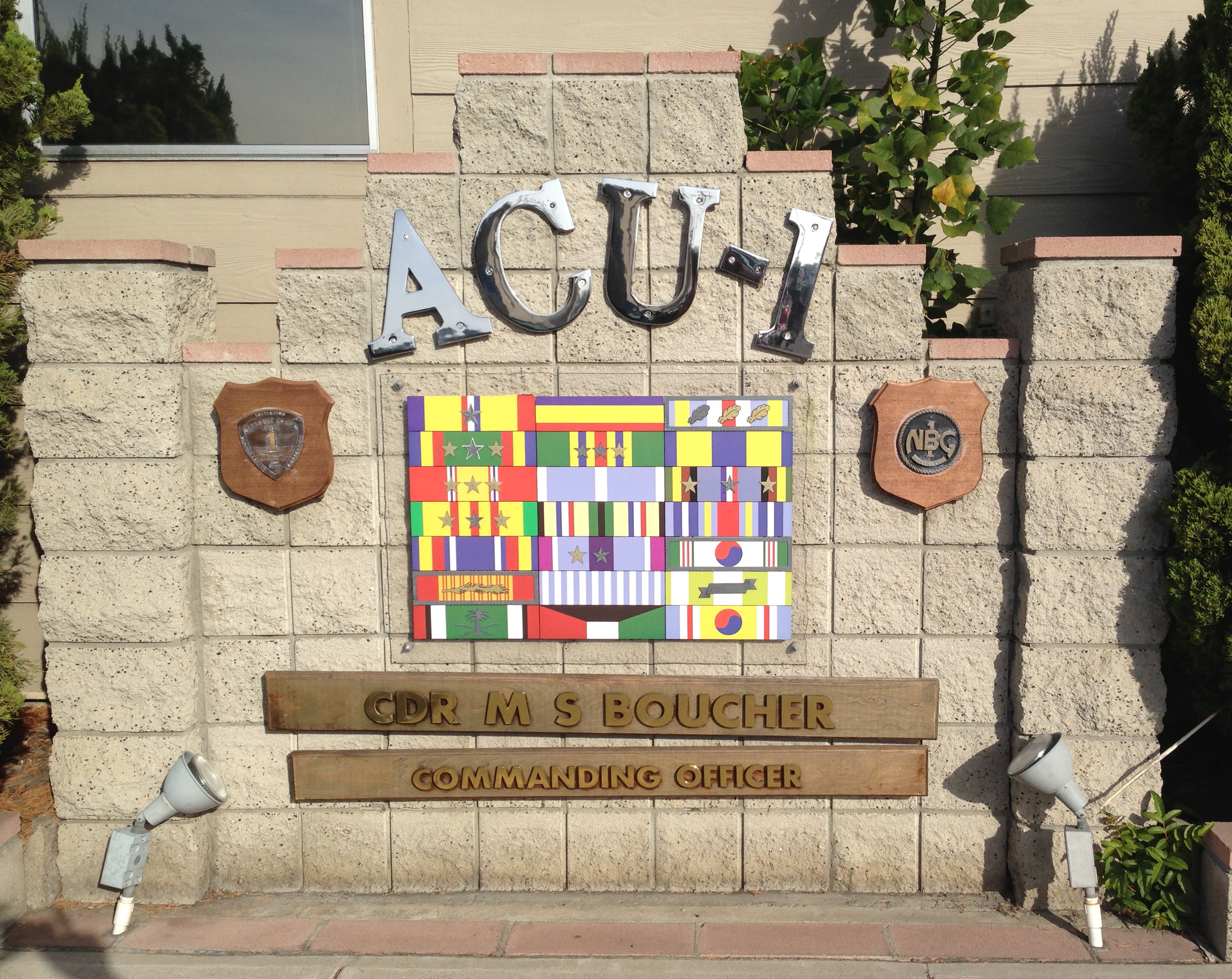Assault Craft Unit ONE on:
[Wikipedia]
[Google]
[Amazon]
Assault Craft Unit ONE, (ACU-1) is a Pacific Ocean Maritime Prepositioning Force in the United States Navy operated under Naval Beach Group ONE out of Naval Amphibious Base (NAB) Coronado with a Forward Detachment in Sasebo,
 Through its continuous operation from the Korean War through today, Assault Craft Unit ONE has been awarded 21 different medals, several with multiple awards.
Through its continuous operation from the Korean War through today, Assault Craft Unit ONE has been awarded 21 different medals, several with multiple awards.
ACU-1 Home Page
Amphibious units and formations of the United States Navy
Japan
Japan ( ja, 日本, or , and formally , ''Nihonkoku'') is an island country in East Asia. It is situated in the northwest Pacific Ocean, and is bordered on the west by the Sea of Japan, while extending from the Sea of Okhotsk in the north ...
. ACU-1's force consists of Landing Craft Utility (LCU) boats, Landing Craft Mechanized (LCM), Mark 8 boats , and Maritime Prepositioning Force Utility Boats (MPFUBs) . The sister unit of ACU-1 is Assault Craft Unit 2 in Naval Amphibious Base Little Creek, Virginia.
History
Assault Craft Unit 1 traces its roots to World War II as hundreds of LCUs were decommissioned, leaving 30 LCUs in the command of "Centralized Flotilla Command" in NAB Coronado known as LCU Squadron ONE. In July, 1947, a neighboring command, Boat Unit ONE, was created to command Landing Craft Mechanized (LCM) LCM-3s and Landing Craft, Vehicle, Personnel (LCVP)s. In 1950, the two commands participated in theBattle of Inchon
The Battle of Incheon (), also spelled Battle of Inchon, was an amphibious invasion and a battle of the Korean War that resulted in a decisive victory and strategic reversal in favor of the United Nations Command (UN). The operation involved so ...
and in every amphibious operation of the Korean War afterward.
In 1963, the LCU Squadron ONE and Boat Unit ONE were merged to make Assault Craft Squadron 1 (ACS-1). In 1968, the Chief of Naval Operations (CNO) directed to have ACS-1 and its Assault Craft Divisions ELEVEN, TWELVE and THIRTEEN be disestablished and reformed as Assault Craft Unit ONE (ACU 1).
In 1990, in response to the Gulf War, ACU-1 was a first responder, acting to transport and unload cargo from Maritime Prepositioning Ships using LCM-8s. Since the September 11 attacks, ACU-1 has operated outside of a strictly military role, providing humanitarian services and disaster relief. Recently, ACU-1 has operated with other Amphibious Battalions providing Military logistics
Military logistics is the discipline of planning and carrying out the movement, supply, and maintenance of military forces. In its most comprehensive sense, it is those aspects or military operations that deal with:
* Design, development, acqui ...
for the Key Resolve/Foal Eagle Military exercise
A military exercise or war game is the employment of military resources in training for military operations, either exploring the effects of warfare or testing strategies without actual combat. This also serves the purpose of ensuring the com ...
in South Korea.
LCU 1500 Memorial
On 28 February 1968, nearOcean View, Viet Nam
Oceanview was a U.S. Marine Air Naval Gunfire Liaison Company (ANGLICO) observation post located on the coast some 10 km north of the Cua Viet River in Quang Tri Province and just south of the Vietnamese Demilitarized Zone (DMZ). It was a ve ...
, LCU 1500 was hit by a rocket, killing the Radioman. One year later, on 27 February 1969, while loading ammunition in Da Nang
Nang or DanangSee also Danang Dragons ( ; vi, Đà Nẵng, ) is a class-1 municipality and the fifth-largest city in Vietnam by municipal population. It lies on the coast of the East Sea of Vietnam at the mouth of the Hàn River, and is one ...
, an enemy rocket hit the nearly loaded craft and killed 13 crew aboard. On 14 March 1969, ACU-1 began an annual memorial to the 14 sailors that lost their lives on LCU 1500. At the ACU-1 compound on NAB Coronado, a recreational cabana
Cabana, cabanas or cabañas may refer to:
*Cabana (structure), either a small hut built with a thatched roof, or a recreational structure with at least one wall open at a beachside or poolside club
Places
* Cabana, Peru, capital of the Cabana D ...
was erected near its piers and painted to look like LCU 1500. The cabana houses pictures of the crew and ship as well as a memorial with the names of the slain Sailors.
Structure
The six departments of ACU-1 are Landing Craft, Administration, Engineering, Medical, Operations, and Supply. The most prevalent ratings at the command are Boatswain's Mates (BM), Enginemen (EN), Quartermasters (QM), and Undesignated Seamen (SN). Secondary and support ratings at ACU-1 include Culinary Specialists (CS), Damage Controlmen (DC), Electrician's Mates (EM), Hull Maintenance Technicians (HT), Logistics Specialists (LS), Machinist's Mates (MM), Operations Specialists (OS), Navy Counselors (NC), and Yeomen (YN). The LC department is divided into three divisions; LCU, MPF, and MRF. The LCU Division operates its LCUs which can make long deployments independently or aboard larger amphibious vessels such as LHDs and LHAs. The MPF Department operate and maintain its LCM-8 and MPFUB crafts locally and are mobilized and flown to theaters to perform maritime prepositioning operations within 24 hours notice. The MRF Department operates 6 eleven-meter RHIBs. ACU-1 had its change of command on Dec. 1, 2017, at which time CDR Nathan W. Fugate took over as Commanding Officer.Awards
 Through its continuous operation from the Korean War through today, Assault Craft Unit ONE has been awarded 21 different medals, several with multiple awards.
Through its continuous operation from the Korean War through today, Assault Craft Unit ONE has been awarded 21 different medals, several with multiple awards.
References
{{ReflistExternal links
ACU-1 Home Page
Amphibious units and formations of the United States Navy